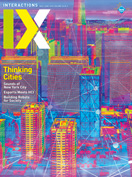Authors:
Ali Kenner
Several years ago, a colleague commented, "I don't know how you can work on climate change; it's such a huge topic and there is so much to read." At the time—about 2016—I was just starting out, teaching public workshops on climate science and local impacts in Philadelphia. The aim was simple, and urgent: Get information about climate change out to people, and foster open discussion so that folks felt comfortable talking about what was a very unwieldy subject. Today, what needs to be said about climate change is the same… but also different. Climate grief looms large among undergraduate students. Confusion and frustration abound in many conversations. Disagreement widens among colleagues. Where do we even begin to have a conversation anymore?
I returned to Hannah Knox's Thinking Like a Climate: Governing a City in Times of Environmental Change numerous times over the past year, using it to ground my teaching and everyday conversations. I keep returning to it because it's one of those texts that gives so much: It describes the landscape of environmental politics in Manchester, U.K., which resonates with my own experiences in Philadelphia; it leverages the theoretical work of anthropologists and STS scholars, helping me to reflect on what has gone so horribly wrong in both global and local efforts to address climate change; and it opens up what is meant by climate action—a controversial term that leads to debate (internally and with others) about what actions are right, what actions are… enough.

Thinking Like a Climate is the core text for Cities and Climate Change, a course I teach with both undergraduate and graduate sections. We use the many ethnographic cases that Knox writes up to study and analyze how cities around the world—from Accra to Lahore, Santiago to Denver—are acting on climate change. Each student chooses a city to research throughout the term, comparing findings with classmates through weekly assignments. Knox's chapter on how carbon emissions get quantified and worked into policy helps us think about how cities account for their own relationship to fossil fuels, and the space they take up in urban economies. Likewise, the chapter on stakeholders helps students map out political power and agendas against local impacts, giving voice to questions about who decides what buildings will be sacrificed to sea-level rise, or given a pass on emission standards. All the while, Knox reminds us to keep discursive frames and ontologies at the forefront of our analysis, which students draw on as they navigate data visualizations, sustainability plans, and the climate art installations found in many cities.
Whether teaching about climate change in public settings or university seminars, grappling with the ocean of dos and don'ts we now find in publications of all kinds, or struggling with how to make sense of climate change in our work, Thinking Like a Climate helps anchor ideas and actions in times of confusion.
Ali Kenner is an associate professor at Drexel University. Her research and teaching focus on environmental health, including the asthma epidemic, climate change, and energy transitions. She runs the Energy Rights Project, an ethnographic research program that documents everyday experiences with energy infrastructure and policy. [email protected]
Copyright held by author
The Digital Library is published by the Association for Computing Machinery. Copyright © 2022 ACM, Inc.








Post Comment
No Comments Found